Topics
- Biodiversity (24) Apply Biodiversity filter
- Sustainable development (15) Apply Sustainable development filter
- Climate change (12) Apply Climate change filter
- Business (6) Apply Business filter
- Food security (6) Apply Food security filter
- Protected areas (6) Apply Protected areas filter
- Forests (5) Apply Forests filter
- Health and nature (5) Apply Health and nature filter
- Water (5) Apply Water filter
- Wildlife trafficking (5) Apply Wildlife trafficking filter
- Human-wildlife conflict (4) Apply Human-wildlife conflict filter
- Oceans (2) Apply Oceans filter
- Gender (1) Apply Gender filter
Crossroads blog
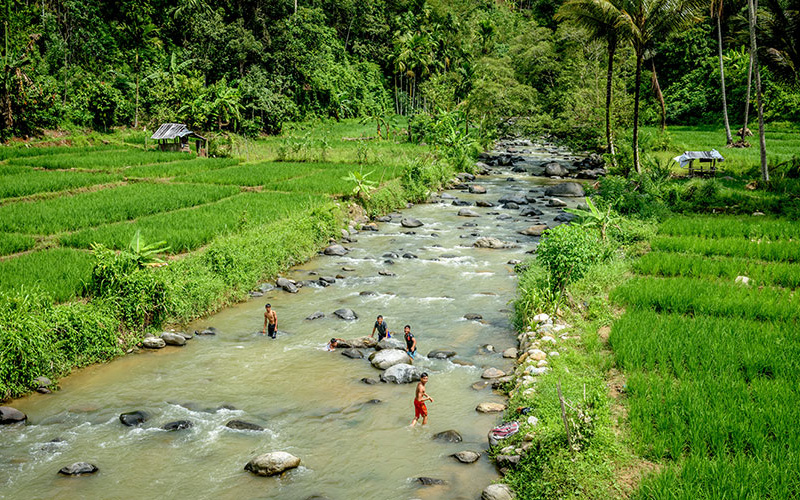 Children play in the Aek Mais River which flows from the Batang Gadis watershed in North Sumatra, Indonesia.
Photo: © Conservation International, Tory Read
Children play in the Aek Mais River which flows from the Batang Gadis watershed in North Sumatra, Indonesia.
Photo: © Conservation International, Tory Read
Why the global water crisis needs local solutions
Dr Derek Vollmer and Dr Ian Harrison, Conservation InternationalWater security is under threat as competing socio-...
 A manta ray (Mobula sp. cf. birostris) surprises visitors to Georgia Aquarium, USA. Researchers study their behaviour in the aquarium to inform field conservation.
Photo: Georgia Aquarium
A manta ray (Mobula sp. cf. birostris) surprises visitors to Georgia Aquarium, USA. Researchers study their behaviour in the aquarium to inform field conservation.
Photo: Georgia Aquarium
Progressive zoos and aquariums must be part of the world’s response to COVID-19
Dr Martín Zordan, World Association of Zoos and Aquariums (WAZA)Many zoos and aquariums face challenges as...
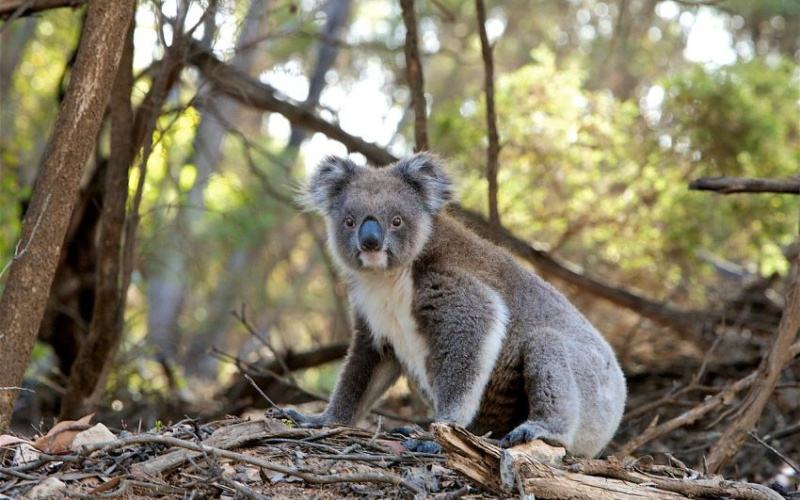 Koalas (Phascolarctos cinereus) are one of many species impacted by mega-fires in Australia.
Photo: Pixabay / Pexels
Koalas (Phascolarctos cinereus) are one of many species impacted by mega-fires in Australia.
Photo: Pixabay / Pexels
Climate change and wildfires: lessons from Australia’s Blue Mountains
Dr John Merson, Blue Mountains World Heritage InstitutePeriodic fires are a normal part of the lifecycle of many...
 A reintroduced addax in Djebil National Park, Tunisia
Photo: Tim Woodfine
A reintroduced addax in Djebil National Park, Tunisia
Photo: Tim Woodfine
To save the addax antelope, the oil sector and government must work together with conservationists
Philippe Chardonnet, David Mallon, Tim WoodfineThe addax desert antelope may be the world’s rarest hoofed mammal,...
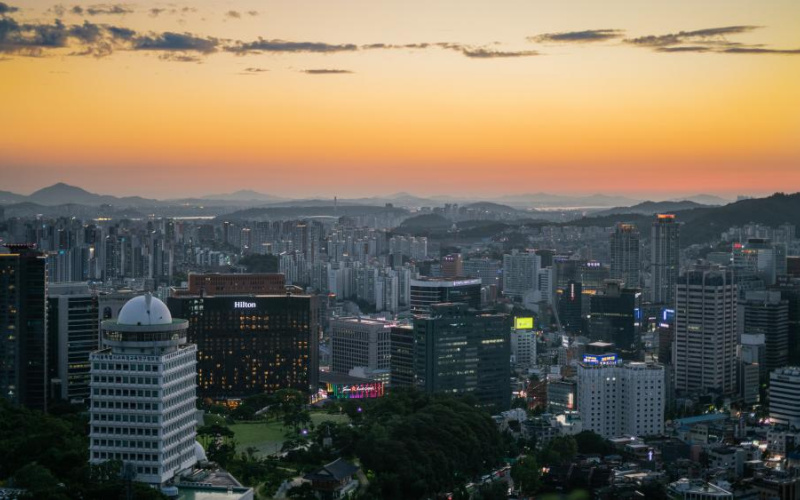 Photo: Ethan Brooke on Unsplash
Photo: Ethan Brooke on Unsplash
Cities must reconnect with natural foundations to face climate, health and biodiversity crises
Jonny Hughes, Chief Executive Officer, World Conservation Monitoring Centre‘Greening’ cities brings myriad...
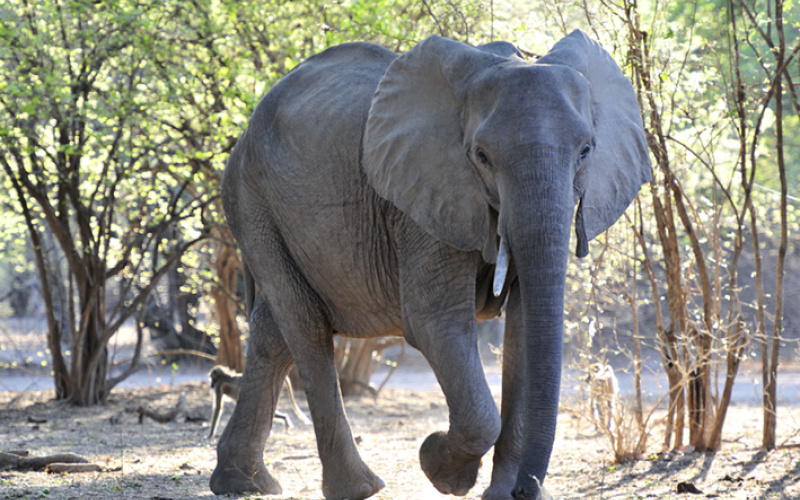 African savanna elephant, Mana Pools, Zimbabwe. Elephant are megaherbivores who provide checks and balances in terms of ecosystem health. Loss of elephants has a major impact on overall ecosystem health.
Photo: Michael D. Kock 2010
African savanna elephant, Mana Pools, Zimbabwe. Elephant are megaherbivores who provide checks and balances in terms of ecosystem health. Loss of elephants has a major impact on overall ecosystem health.
Photo: Michael D. Kock 2010
It is Time for a Global Wildlife Health Authority
Members of the IUCN SSC Wildlife Health Specialist GroupThe COVID-19 pandemic has revealed how vulnerable we are...
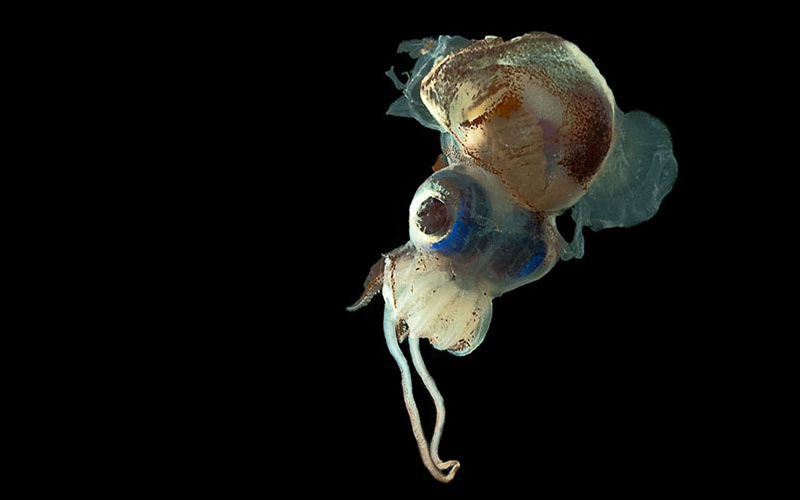 This Stoloteuthis squid found in the Indian Ocean on IUCN’s 2009 Seamounts expedition is but one example of the unique species found in the high seas.
Photo: © IUCN / Sarah Gotheil
This Stoloteuthis squid found in the Indian Ocean on IUCN’s 2009 Seamounts expedition is but one example of the unique species found in the high seas.
Photo: © IUCN / Sarah Gotheil
Protecting our global ocean commons
Lauren KubiakTwo-thirds of the world’s ocean is beyond national jurisdiction, where existing regulations regarding...
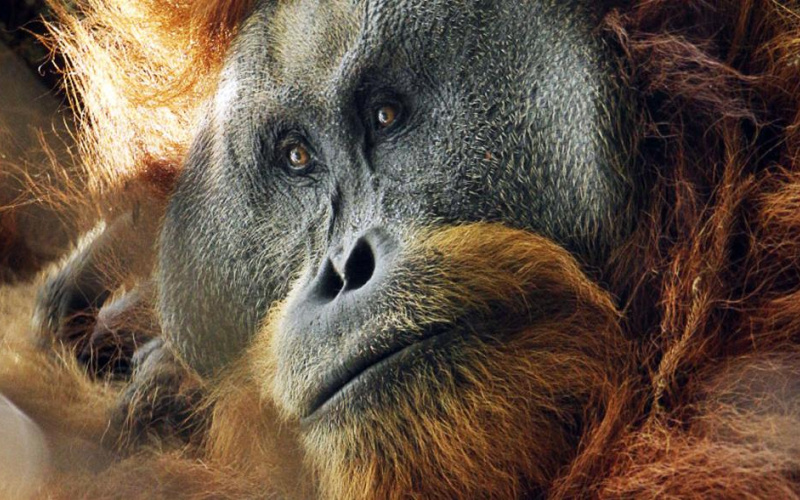 A Tapanuli orangutan, the world’s rarest great ape, in the Batang Toru region of northern Sumatra, Indonesia.
Photo: Maxime Aliaga
A Tapanuli orangutan, the world’s rarest great ape, in the Batang Toru region of northern Sumatra, Indonesia.
Photo: Maxime Aliaga
Is this our chance to save the world's rarest great ape?
Erik Meijaard and Serge Wich of the IUCN Primate Specialist GroupA planned hydroelectric dam poses serious threats...
 Orangutan mother and infant in Sarawak, Malaysia.
Photo: © Daniel Kong
Orangutan mother and infant in Sarawak, Malaysia.
Photo: © Daniel Kong
Quarantining also means caring for our great ape relatives
Elizabeth L. BennettGorillas and other great apes are particularly susceptible to pathogens from humans, and the...
 Spider Monkey (Ateles paniscus), Central Suriname Nature Reserve, a vast area of primary forest.
Photo: Russell A. Mittermeier
Spider Monkey (Ateles paniscus), Central Suriname Nature Reserve, a vast area of primary forest.
Photo: Russell A. Mittermeier
Primary forests: a priority nature-based solution
Members of the IUCN Primary Forests Task ForcePrimary forests sequester more carbon, more safely than planted...
 The goonch (Bagarius yarelli) is listed as Near Threatened in the IUCN Red List of Threatened Species.™ Native to rivers in South Asia, this species is harvested for food and the ornamental fish trade. Photographer: Zeb Hogan, SSC Freshwater Fish Specialist Group Advisor, University of Nevada
Photo: courtesy of the University of Nevada Global Water Center
The goonch (Bagarius yarelli) is listed as Near Threatened in the IUCN Red List of Threatened Species.™ Native to rivers in South Asia, this species is harvested for food and the ornamental fish trade. Photographer: Zeb Hogan, SSC Freshwater Fish Specialist Group Advisor, University of Nevada
Photo: courtesy of the University of Nevada Global Water Center
Wetlands: the ultimate biodiversity hotspot
Members of the SSC Freshwater Conservation CommitteeWetlands provide habitats and breeding grounds for countless...
 Skiers at a resort in Krasnaya Polyana located in the Western Caucasus in Southern Russia.
Photo: © Ria Novosti archive/Mikhail Mokrushin
Skiers at a resort in Krasnaya Polyana located in the Western Caucasus in Southern Russia.
Photo: © Ria Novosti archive/Mikhail Mokrushin
Putting sport and nature on the same team
Marco LambertiniFor most sports, nature is the ‘stadium’ and the foundation. Athletes need healthy food, clean air...
 Papuan people with freshwater crocodiles in the Sepik River, Papua New Guinea.
Photo: Dr Keith K. Galgal.
Papuan people with freshwater crocodiles in the Sepik River, Papua New Guinea.
Photo: Dr Keith K. Galgal.
Is banning exotic leather bad for reptiles?
IUCN SSC members - reptiles and sustainable useRecent bans on the sale of leather from exotic reptiles such as...
 Around 90% of lemur species, found only in Madagascar, are threatened with extinction due to habitat destruction.
Photo: © Russell Mittermeier
Around 90% of lemur species, found only in Madagascar, are threatened with extinction due to habitat destruction.
Photo: © Russell Mittermeier
Hope for Madagascar and its lemurs
Russell MittermeierWhat can be done to ensure the long-term survival of Madagascar’s amazing biodiversity –...
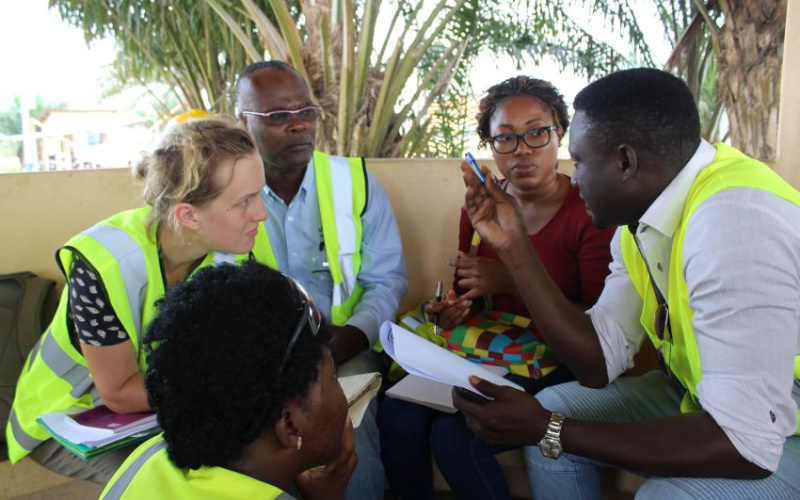 Collaboration between the government, private sector and civil society is essential for the achievement of a more sustainable world.
Photo: IUCN/Nadine McCormick
Collaboration between the government, private sector and civil society is essential for the achievement of a more sustainable world.
Photo: IUCN/Nadine McCormick
Environmental challenges: too big for government and business to tackle alone
Carola van RijnsoeverEcosystems and the services they provide are at risk; their decline could jeopardise the...
 Mangroves and wetlands help purify water, nurture fish stocks and protect shorelines from storms and erosion. They are also sources of food, such as in this Ramsar Convention protected site in Fiji.
Photo: Ramsar Convention
Mangroves and wetlands help purify water, nurture fish stocks and protect shorelines from storms and erosion. They are also sources of food, such as in this Ramsar Convention protected site in Fiji.
Photo: Ramsar Convention
Nature: A global fix for global risks
Inger AndersenAt a time when environmental threats to humanity loom ever larger, IUCN stands as the organisation...
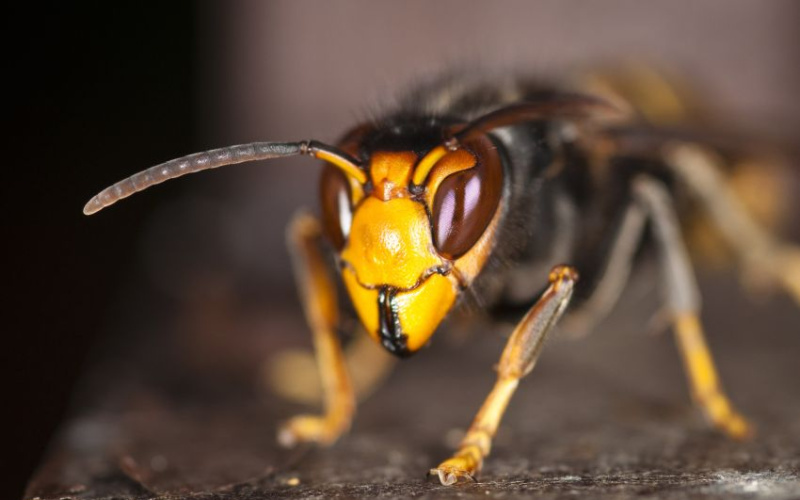 Invasive Asian hornets, which have been spreading throughout Europe, are predators of native honey bees, threatening honey production.
Photo: © Danel Solabarrieta Flickr CC BY SA 2.0
Invasive Asian hornets, which have been spreading throughout Europe, are predators of native honey bees, threatening honey production.
Photo: © Danel Solabarrieta Flickr CC BY SA 2.0
Do non-native species count as biodiversity?
Dan SimberloffThere have been calls for biodiversity and ecosystem assessments to count non-native species as well...
 Wildlife conservancies managed by local communities provide an opportunity for income generation and conservation to take place side-by-side
Photo: Make It Kenya CC 1.0
Wildlife conservancies managed by local communities provide an opportunity for income generation and conservation to take place side-by-side
Photo: Make It Kenya CC 1.0
Communities hold the key to expanding conservation impact in Africa
Fred Nelson and Rosie CooneyWildlife conservation that uses community partnerships is working for people and...
 Rural communities in developing nations often depend most directly on natural resources, yet endure the poorest health services.
Photo: David Humaní / Photoshare
Rural communities in developing nations often depend most directly on natural resources, yet endure the poorest health services.
Photo: David Humaní / Photoshare
The elephant left the room quite some time ago; let’s follow
David JohnsonPopulation was once a taboo subject. With the global population set to rise to over 9.7 billion by...
 The wildlife trade involves hundreds of millions of individual plants and animals from tens of thousands of species.
Photo: Dan Challender/Save Vietnam's Wildlife
The wildlife trade involves hundreds of millions of individual plants and animals from tens of thousands of species.
Photo: Dan Challender/Save Vietnam's Wildlife
Empowering whistleblowers is the key to combating wildlife crime
Scott HajostWhistleblowers have been effective at combatting financial and corporate crime, but are sorely lacking...
 Flooding in Manila, Philippines, in 2012
Photo: © Vinod Thomas
Flooding in Manila, Philippines, in 2012
Photo: © Vinod Thomas
To curb disaster damage, we need smart investments in nature
Dr Vinod ThomasAs the destruction caused by natural disasters grows in intensity, we urgently need to invest in...
 Conservation organizations are working together to protect forests and wildlife in the eastern Democratic Republic of the Congo.
Photo: Rod Waddington CC2.0
Conservation organizations are working together to protect forests and wildlife in the eastern Democratic Republic of the Congo.
Photo: Rod Waddington CC2.0
Unlikely partners: how teaming up with ‘nature’s enemies’ could boost the impact of conservation
Jon StrykerNature, where everything is interconnected, is a shining example of the strength and brilliance of the...
 The tiger population is growing within Tadoba Andhari Tiger Reserve, India.
Photo: © Harshawardhan Dhanwatey
The tiger population is growing within Tadoba Andhari Tiger Reserve, India.
Photo: © Harshawardhan Dhanwatey
Beyond the reserve: managing the consequences of successful tiger conservation
Poonam DhanwateyEffective protection for tigers within some wildlife reserves has caused their populations to rise...
 The Candonga Reservoir downstream of the dam site was heavily affected by the spill.
Photo: Ibama CC2.0
The Candonga Reservoir downstream of the dam site was heavily affected by the spill.
Photo: Ibama CC2.0
Changing tide for the Rio Doce: bringing a river back to life
Yolanda KakabadseIn the long term, it pays for business to use natural resources in a way that benefits all of...
 Zebras and wildebeest in Ngorongoro Crater, Tanzania.
Photo: Janet CC3.0
Zebras and wildebeest in Ngorongoro Crater, Tanzania.
Photo: Janet CC3.0
Protected areas: a hope in the midst of the sixth mass extinction
Richard LeakeyWith the world entering the biggest mass extinction since the dinosaurs disappeared 65 million years...
 Displaced persons in Geneina, West Darfur, in 2007.
Photo: Nite owl CC
Displaced persons in Geneina, West Darfur, in 2007.
Photo: Nite owl CC
Degradation of nature is contributing to conflict – can we reverse the trend?
Queen Noor Al HusseinThe degradation of nature is undermining the security and peace of billions of people...


